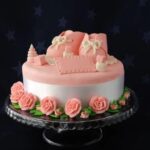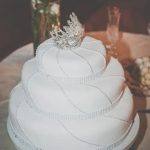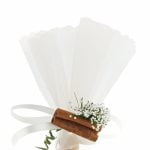Filigree lace in cake decorating is an intricate and delicate technique that adds a touch of elegance to any confection. This decorative element involves creating intricate lace-like designs on cakes, reminiscent of traditional lace patterns. Incorporating filigree lace into cake decorating can elevate the overall aesthetic of a cake, making it a popular choice for weddings, birthdays, and other special occasions.
The art of filigree lace in cake decorating has a rich history and origins that date back centuries. Originally inspired by the intricate metalwork of jewelry and architecture, this technique has evolved into a unique form of edible decoration in the culinary world. Today, skilled bakers and pastry chefs use various tools and materials to achieve stunning filigree lace designs on cakes, showcasing their craftsmanship and attention to detail.
Creating filigree lace on cakes requires precision and patience, as well as specific tools such as silicone molds, piping bags, and edible lace mixture. By following a step-by-step guide, aspiring bakers can learn how to master this technique and enhance their cake decorating skills. Throughout this article, we will delve deeper into the history, techniques, designs, and modern trends surrounding filigree lace in cake decorating to help you explore the endless possibilities of this exquisite art form.
History and Origins of Filigree Lace in Cake Decorating
The history and origins of filigree lace in cake decorating can be traced back to ancient times when intricate designs were handcrafted with attention to detail. Filigree lace, also known as sugar lace, is a delicate and elegant technique that involves creating intricate lace patterns using edible materials on cakes. This technique adds a touch of sophistication and luxury to any cake design, making it a popular choice for special occasions like weddings and birthdays.
In the past, filigree lace was predominantly created using royal icing or gum paste, which required a high level of skill and precision. However, with advancements in technology and new techniques emerging, fondant or modeling chocolate are now commonly used to achieve the same delicate look. The transition from traditional methods to modern approaches has made filigree lace more accessible to both professional bakers and hobbyists alike.
Filigree lace in cake decorating has evolved over the years, with different cultures and regions infusing their unique styles into this art form. From elaborate Victorian-inspired designs to minimalist contemporary patterns, the versatility of filigree lace allows for endless creativity. Whether you are looking to add a vintage charm or a modern flair to your cakes, mastering the art of filigree lace can truly elevate your cake decorating skills.
| Filigree Lace Techniques | Materials Needed |
|---|---|
| Creating intricate lace patterns | Fondant or modeling chocolate |
| Exploring different cultural styles | Edible glue for attaching lace pieces |
| Enhancing cake designs with elegance | Lace molds or cutters for precise shapes |
Materials and Tools Needed for Filigree Lace
Filigree lace in cake decorating is a delicate and intricate technique that requires specific materials and tools to achieve beautiful results. Whether you are a beginner or an experienced baker, having the right supplies is essential for creating stunning filigree lace designs on your cakes. Here are some of the key items you will need to get started:
- Edible Lace Mix: This specially formulated mix is designed to create flexible and edible lace that can be easily shaped and applied to cakes.
- Lace Mat: A silicone lace mat with intricate patterns is essential for creating filigree lace designs. Make sure to choose a design that suits the style of your cake.
- Piping Gel: Piping gel acts as an adhesive for attaching the filigree lace to your cake. It helps the lace stick securely while still allowing flexibility for shaping.
- Piping Bags and Tips: Using fine piping tips with small openings will help you achieve precision when piping the filigree lace onto your cake.
- Offset Spatula: An offset spatula is useful for spreading the edible lace mix evenly onto the lace mat and smoothing out any air bubbles.
In addition to these essential materials, having a clean workspace, parchment paper, and a good quality oven or dehydrator for drying the filigree lace are also important considerations. By investing in these tools, you can ensure that your filigree lace decorations turn out beautifully every time.
Creating filigree lace in cake decorating requires patience, practice, and attention to detail. With the right materials and tools at your disposal, you can elevate your cakes to new heights with this elegant technique.
Experimenting with different designs and incorporating filigree lace into various cake styles will allow you to unleash your creativity and impress your friends and family with stunning desserts. Let’s dive into the step-by-step guide on how to create filigree lace on cakes in the next section of this article.
Step-by-Step Guide to Creating Filigree Lace on Cakes
Filigree lace in cake decorating adds a touch of elegance and sophistication to any confection. This intricate technique involves creating delicate, lace-like designs on the surface of a cake, mimicking the look of traditional filigree patterns. Whether you’re a beginner or an experienced baker looking to elevate your cake decorating skills, mastering filigree lace can take your creations to the next level.
Gathering Materials and Tools
Before you begin creating filigree lace on cakes, it’s essential to gather all the necessary materials and tools. You will need a fine tip piping bag or squeeze bottle, royal icing or gum paste for piping, lace molds or stencils for intricate designs, a turntable for easy decorating, and any additional decorations like edible pearls or flowers to enhance the final look of your cake. Make sure your work surface is clean and dry before starting the process.
Creating Filigree Lace
To create filigree lace on cakes, start by preparing your royal icing or gum paste to the desired consistency. Fill your piping bag with the icing and carefully pipe intricate lace designs onto the surface of your cake using steady hand movements. You can use lace molds or stencils as guides for more detailed patterns.
Allow each layer of lace to dry completely before adding another layer to prevent smudging or blending of colors. Experiment with different techniques such as layering, looping, or weaving to create unique filigree designs on your cakes.
Finishing Touches
Once you have completed creating filigree lace on your cake, add any final touches like edible pearls, sugar flowers, or metallic accents to enhance the overall look. Take care when handling the decorated cake to prevent any damage to the delicate filigree lace designs. With practice and patience, you can master the art of creating filigree lace in cake decorating and impress your friends and family with stunning confections that reflect your creativity and attention to detail.
Tips and Tricks for Perfecting Filigree Lace Techniques
Filigree lace in cake decorating is a delicate and intricate technique that requires precision and attention to detail. To perfect this decorative element, here are some tips and tricks to guide you through the process:
1. Use the right consistency for your icing or fondant: The key to creating beautiful filigree lace is using icing or fondant with the perfect consistency. It should be thick enough to hold its shape when piped, but not too thick that it becomes difficult to work with. Practice piping on a separate surface before applying it to your cake.
2. Practice proper piping techniques: When piping filigree lace, it’s important to control the pressure on your piping bag. Squeeze gently for thin lines and increase pressure for thicker lines. Keep a steady hand as you pipe, moving at a consistent pace to maintain even lines.
3. Allow sufficient drying time: Filigree lace designs need time to dry and set before handling or attaching them to cakes. Make sure to plan ahead and allow ample time for each layer or design element to dry completely before adding additional details.
4. Incorporate different textures and finishes: Experiment with different piping tips and techniques to create unique filigree lace designs on your cakes. Mix and match patterns, add shimmer with edible luster dust, or incorporate edible pearls or dragees for added dimension.
By following these tips and tricks, you can elevate your cake decorating skills and master the art of filigree lace in no time. Practice makes perfect, so don’t be afraid to experiment with different designs and techniques to find what works best for you in creating stunning filigree lace decorations on your cakes.
Popular Filigree Lace Designs for Cake Decorating
Filigree lace designs in cake decorating are intricate and delicate patterns that add a touch of elegance to any cake. These designs typically consist of intricate swirls, loops, and floral motifs that resemble the fine details found in traditional lace fabric.
One popular filigree lace design often seen on cakes is the scrollwork pattern, which features elaborate scrolling lines that create a beautiful and timeless look. Another common filigree lace design is the lattice pattern, which mimics the look of woven fabric with its intersecting lines.
When creating filigree lace designs on cakes, decorators can use a variety of techniques to achieve different looks. Some may opt for piping royal icing onto the cake in intricate patterns, while others choose to use flexible silicone molds to emboss fondant or gum paste with filigree designs. Regardless of the method used, attention to detail and precision are key when working with filigree lace in cake decorating.
One unique aspect of filigree lace designs in cake decorating is their versatility. These intricate patterns can be adapted to suit a variety of themes and styles, making them suitable for everything from elegant wedding cakes to whimsical birthday creations. By experimenting with different colors, textures, and embellishments, decorators can customize filigree lace designs to complement the overall aesthetic of any cake.
Incorporating Filigree Lace Into Different Cake Styles
Filigree lace in cake decorating is a delicate and intricate technique that can add a touch of elegance and sophistication to any cake. Incorporating filigree lace into different cake styles can elevate the overall look and feel of the dessert, making it perfect for various occasions such as weddings, birthdays, or even just for a special treat.
Classic Elegance
One way to incorporate filigree lace into different cake styles is by opting for a classic and timeless design. Choose a traditional white or ivory color for the lace to create a sophisticated and elegant look. Pairing filigree lace with simple floral decorations or pearl accents can enhance the overall aesthetic of the cake, giving it a romantic and refined style.
Modern Minimalism
For those looking for a more contemporary approach, incorporating filigree lace into a modern minimalist cake design can create a striking contrast. Consider using geometric shapes or metallic accents along with the lace to give the cake a sleek and sophisticated appearance. Opting for monochromatic colors like black or silver can also add a touch of edginess to the overall look.
Vintage Charm
If you’re aiming for a vintage-inspired look, incorporating filigree lace into different cake styles can help achieve that charming aesthetic. Choose muted pastel colors such as blush pink or mint green for the base of the cake, and add intricate filigree lace details in complementary shades. Incorporating vintage elements like brooches or ribbon bows can further enhance the nostalgic feel of the design.
Filigree Lace in Modern Cake Decorating Trends
In recent years, filigree lace has become a prominent trend in modern cake decorating. This delicate and intricate technique adds a touch of elegance and sophistication to cakes, making them truly stand out. The popularity of filigree lace in cake decorating can be attributed to its versatility and the stunning effect it creates on cakes for various occasions, from weddings to birthdays and more.
One of the key reasons why filigree lace has become a favorite among cake decorators is its ability to add intricate detailing effortlessly. This technique involves piping intricate lace-like patterns onto cakes using royal icing or other edible mediums. The result is a stunning design that resembles traditional lace fabric, creating a visually appealing contrast between the ornate patterns and the smooth surface of the cake.
Filigree lace designs have evolved over time, incorporating modern twists and techniques to suit contemporary cake styles. From geometric patterns to floral motifs, there are endless possibilities when it comes to creating filigree lace on cakes.
Some decorators even experiment with metallic accents or colorful details to add a unique touch to their creations. Whether used as subtle accents or as the focal point of a cake design, filigree lace never fails to impress with its timeless beauty and intricate details.
Conclusion
In conclusion, mastering the art of filigree lace in cake decorating can truly elevate your skills to new heights. The intricate and delicate designs created through filigree lace add a touch of elegance and sophistication to any cake. By understanding the history, materials, and techniques involved in filigree lace, you can enhance your cake decorating repertoire.
Whether you are a beginner or an experienced baker, incorporating filigree lace into your cakes can set your creations apart. The step-by-step guide provided in this article offers a foundation for practicing and perfecting this intricate technique. Remember to use the right tools and materials, such as piping bags, tips, and edible adhesive, to achieve clean and precise filigree lace designs.
As you continue to explore different designs and styles of filigree lace in cake decorating, don’t be afraid to experiment and personalize your creations. From classic swirls and loops to more modern geometric patterns, the possibilities with filigree lace are endless. With practice and patience, you can master this technique and impress your friends, family, or clients with beautifully adorned cakes. So why wait? Start adding filigree lace to your cake decorating toolbox today.
Frequently Asked Questions
How to Do Filigree on a Cake?
Doing filigree on a cake involves using royal icing or melted chocolate to create intricate designs on the surface. One common technique is piping delicate patterns onto the cake using a pastry bag fitted with a fine tip.
How Do You Stick Rice Paper Sails to a Cake?
Sticking rice paper sails to a cake can be done by attaching them with edible glue made from tylose powder or gum paste mixed with water. Simply apply a small amount of the edible glue to the back of the rice paper sail and press it gently onto the cake.
What Are Types of Cake Decorations?
There are several types of cake decorations commonly used to enhance the aesthetic appeal of cakes. Some popular options include fondant decorations, buttercream flowers, edible pearls or beads, chocolate ganache drips, fresh flowers, sugar paste figurines, and edible glitter or luster dust for shimmer and shine. Each type offers a unique way to customize cakes for any occasion.

Welcome to my blog about home and family. This blog is a place where I will share my thoughts, ideas, and experiences related to these important topics. I am a stay-at-home mom with two young children. I hope you enjoy reading it! and may find some helpful tips and ideas that will make your home and family life even better!





